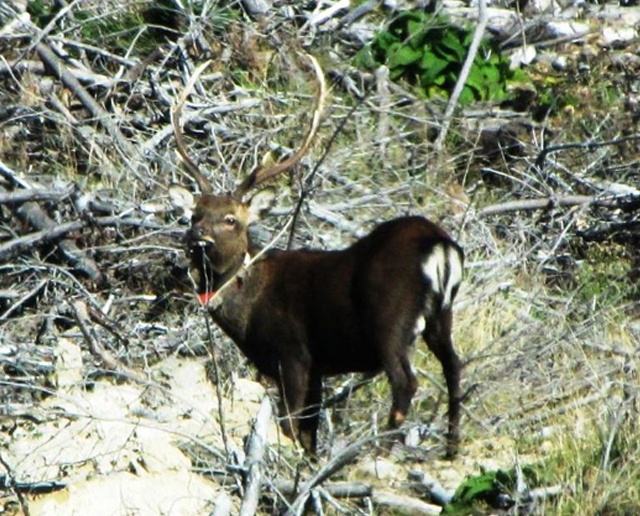


About
07 April 2012
In late May, the remaining collared sika stags in the radio tracking study all returned to their normal winter/spring/summer ranges, after their annual rut. Two of the stags moved large distances again this year to rut in traditional areas, four and seven kilometres respectively, from their summer haunts.
The harvest of eucalyptus forest on Poronui in recent months has created a bit of chaos for many of the resident sika. There is significant behavioral change as deer re-adjust to their changing landscape and this has been reflected in the recent movement patterns of the radio collared stags. The removal of the eucalyptus, which has not performed well in Poronui’ s harsh climate, does however provide opportunity to design a land use plan that optimizes habitat for both deer and hunters. The intention is to replant extensive areas in alternative species such as manuka, which has the added benefit of generating highly valued honey.
Stags are now mobbed up again, having lost all the aggression they show towards each other during the ten week ‘roar’ period. June is an important month for sika stags. They feed longer and can be seen out later in the morning and/or earlier in the afternoon. They also seem to lose much of their caution as feeding becomes the priority. “Green Hill” still remains a key feed focus as stags attempt to regain body condition for the winter
The extensive loss of the forest cover on the south side of Green Hill, in the Poplar Track/Kaimanawa Road area, has pushed stags that usually utilise this warm sheltered basin to new areas. The remaining eucalyptus and manuka forest on the lower terraces of the Taharua River trench, underneath Green Hill, has become a very important alternative for many stags.
The collared stag sample has now been reduced to just five out of the original 15 collared animals. This is disappointing, but does highlight the perilous nature of life for a healthy, well grown sika stag. Monitoring over winter will focus on where the stags find daytime shelter now that so many traditional forested areas have been clear felled. Based on the sign, the herd is still making significant use of the open areas, albeit under cover of darkness. What will be most interesting is to see where they go for daytime and poor weather cover.
Want to ask a question about Poronui, personalise your vacation with bespoke itinerary options or find out about available dates?
Simply fill in your name and contact email address with a short message and we will get back to you.